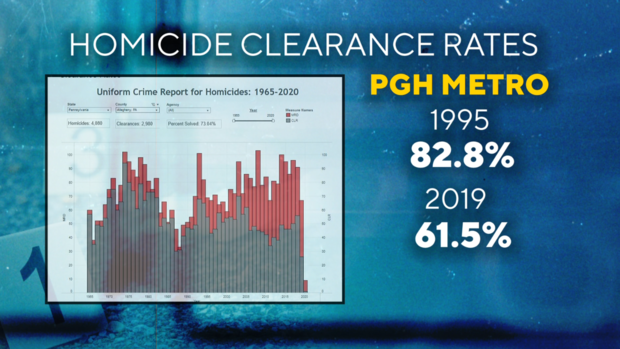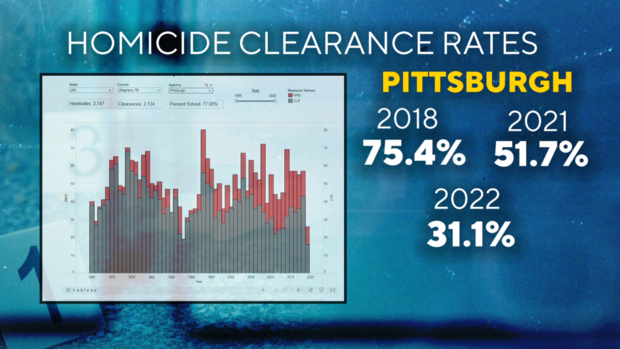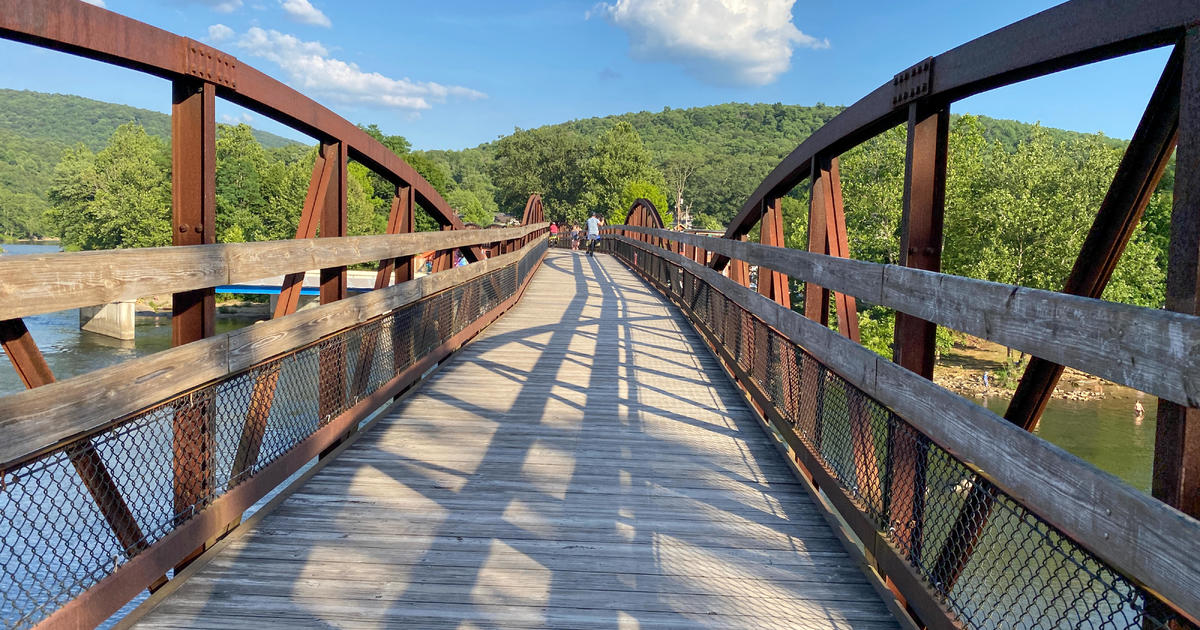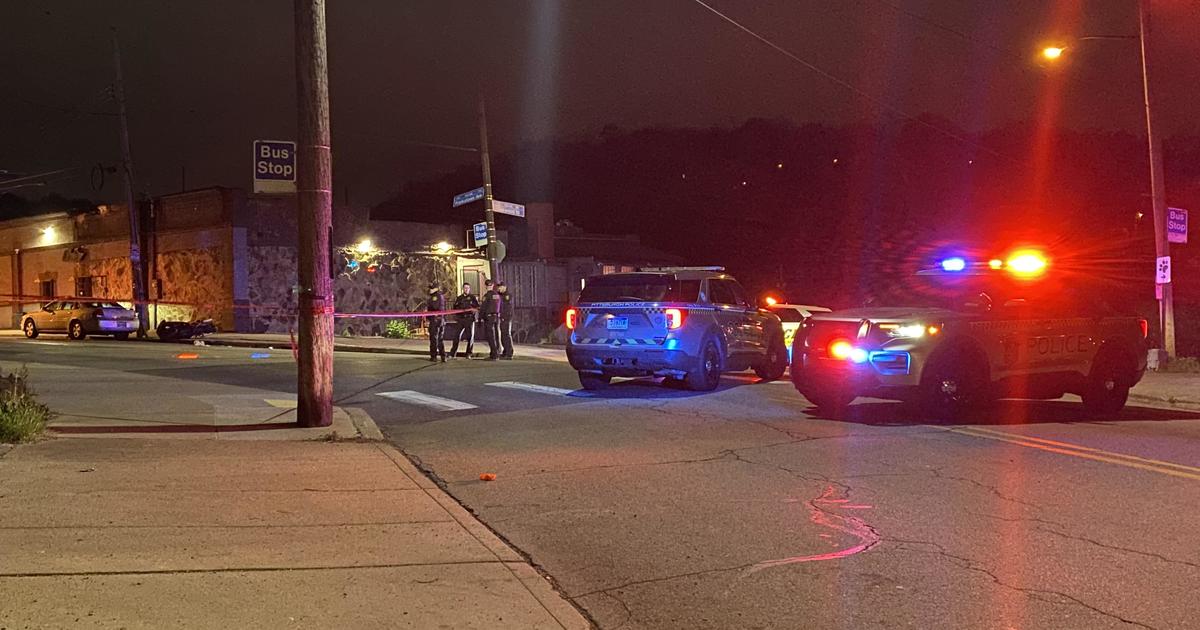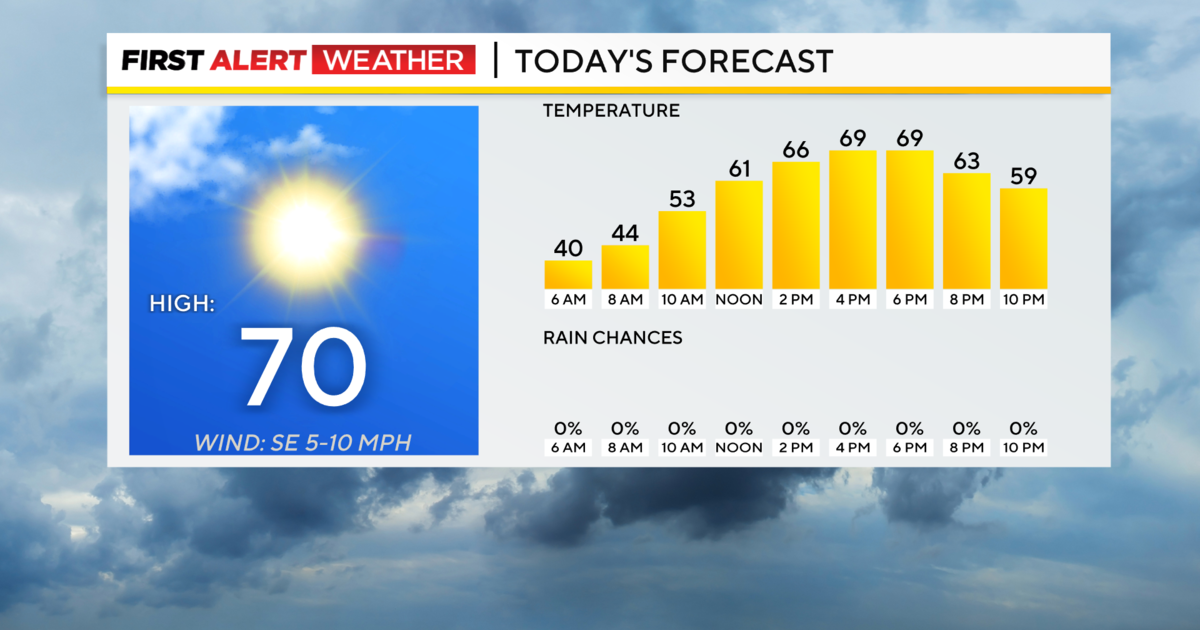KDKA Investigates 'Crime Without Punishment': Pittsburgh homicide clearance rates tumbling as national rate hits all-time low
PITTSBURGH (KDKA) — In a collaboration with CBS News, KDKA Investigates examines crime often going without punishment in our country. Barely half of murder cases in the United States get solved. The national homicide clearance rate is at an all-time low, according to FBI data.
In the mid-1960s, more than 90% of murders were solved, generally resulting in an arrest. By 1990, the percentage fell into the 60s. Then, by 2020, as the number of homicides surged, the national clearance rate dropped to about 50% for the first time ever.
Our analysis with CBS News also discovered a difference by race. The national homicide clearance rate for white victims keeps improving while the rate of solving murders for Black and Hispanic victims is much lower.
So, we wanted to know what's happening locally. Our investigation discovered Pittsburgh's clearance rate was better than the national average until recent years.
Three years ago, Tina Ford became a member of a club no one wants to join. She became the mother of a homicide victim when her son, Armani Ford, a promising student and star quarterback, was gunned down in Clairton.
Her pain has been made worse by the fact that to this day no one has been charged in his murder.
"I know there are people who know what happened and these are people I speak with every day," Ford said. "But I have to keep my faith. One day."
She's not alone. While homicides are spiking across the country, CBS News finds clearance rates — or the percentage of homicides solved by arrests or other means — have been falling dramatically over the past two and a half decades.
According to data provided by the FBI and analyzed by CBS News, in 1995, police solved 60.5% of the homicides in America. But by 2020, the percentage had dropped to 51.6%.
During that same time period, the Greater Pittsburgh metropolitan area maintained clearance rates better than the national average, but the decline was much steeper. In 1995, the region posted a clearance rate of 82.8%; but by 2019, that had fallen to 61.5%.
In just the past three years, the Pittsburgh Bureau of Police's record of solving homicides has fallen closer in line with national levels — from 75.4% in 2018 to 55.6% last year and just 22% so far this year.
Criminologist and former FBI Agent Larry Likar said that sends a message.
KDKA's Andy Sheehan: "If you know you have a better than even chance of getting away with it, you might commit that murder."
Likar: "Yes, and they do know it. The perpetrators are going to know there's a lower rate of solving cases, because they know people who commit these murders get away with it. And that does take away the return capability."
Also, in the past three years in this region, both the homicide victims and their suspected killers have gotten younger and younger. Many now are in their early teens.
Likar and others said one reason for the drop in clearance rates is that these cases have been proven exceptionally difficult to solve or bring to trial. Take the case of 15-year-old Steven Eason, who was shot and killed in front of 50 people at a hayride event last fall but no one has come forward to help police catch his killer.
Sheehan: "Don't snitch. That's the code. That's the code of the street, right?"
Likar: "It is, and they adhere to it."
Police now must rely more heavily on technology to solve homicides. Things like ShotSpotter, license plate readers, and video evidence from surveillance cameras or cell phones. They scour social media for evidence of vendettas or retributions. But this demands a new kind of investigator.
"It's not going to be the seasoned investigator going in (and) getting a confession, getting leads," Likar said. "It's going to be an investigator sitting down at a computer, looking at social media putting it together. It's a different skill set."
Even when they find information that points to likely suspects, it doesn't mean an arrest will be made. Detectives tell KDKA's Andy Sheehan that they often believe they know who is responsible but without someone willing to testify, the district attorney may be reluctant to file charges.
Pittsburgh Police Chief Scott Schubert said he believes it's only a small number of violent criminals who are currently terrorizing the community, but he said they likely won't be identified and prosecuted without someone, anyone in the community stepping up.
"We need the public to help us," he said. "There's only so much that we can do. We can be as proactive as possible, but there's a lot of information that's not coming to us."
"And, I understand that, because I sat with my chief of police, who I have a good rapport with, and he said, 'Tina, we could have solved your son's murder within the hour. No one will talk,'" Ford said.
Ford said she believes better police-community relations and officers gaining back trust in the community could break the code of silence. But in the meantime, she's founded the group MOMS — Mothers of Murders Sons — a support group that helps women preserve the legacies of their children, turning this tragedy into good while waiting for justice.
"I focus on keeping our kids relevant," she said. "That our kids didn't die in vain. Our kids had lives. They had futures."
Law enforcement fears if they can't reverse this trend in clearances, the number of homicides will only go up, and more and more people will die as more and more people begin to believe they can commit crime without punishment.
What we found locally is part of a CBS News investigation of the reasons for unsolved murders across the country. Click here for more on this analysis and story.
Watch the CBS Evening News Wednesday as Chief Investigative Correspondent Jim Axelrod travels to Jackson, Mississippi, a place with one of the highest murder rates in the entire country. And, on Thursday, June 30, you can stream the CBS REPORTS "Crime Without Punishment: Fighting for Justice" documentary on CBS News here.


